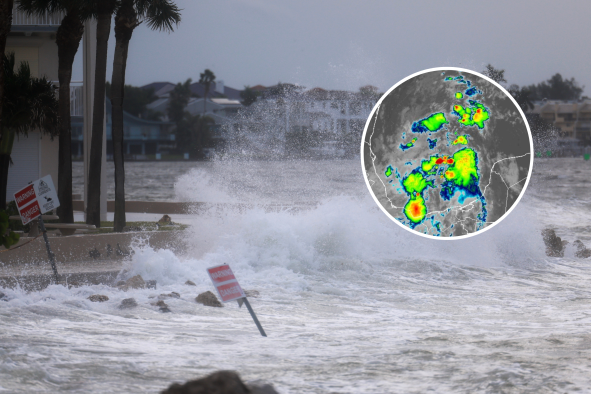Makeup and skincare products have been overlooked as a key source of microplastic pollution, scientists have warned.
While rinse-off products like face scrubs and cleansers have received a significant spotlight for their use of microbeads and other plastics—the inclusion of which has since been banned in many countries—leave-on products like moisturizers, sunscreens, sanitizers and lipsticks, have received much less scrutiny.
"Microplastics are intentionally added to some products to achieve specific effects, depending on the formulation," Anna Kukkola, a research fellow in geography, earth and environmental sciences at the University of Birmingham, told Newsweek. "[However,] the quantities and characteristics of microplastics in cosmetic and personal care products outside the group of rinse-off products such as facial scrubs and toothpastes are largely unknown."
In a new paper, published in the Journal of Hazardous Materials, Kukkola and colleagues reviewed our existing knowledge of microplastics in these leave-on products and their potential impacts on human health. The problem was, there was very little research to work with.
"Our analysis reveals a significant oversight in current research and global regulatory frameworks that predominantly concentrate on rinse-off products," Kukkola said. "The contribution of "leave-on" cosmetics to microplastic pollution is a critical, yet underexplored aspect of environmental contamination."
Exactly how widespread these microplastics are isn't entirely clear. "While anecdotal evidence suggests they may still be widely used, we currently lack comprehensive data, which is why our paper calls for further investigation," Kukkola said.
She added: "Not all cosmetic products contain microplastics, so it's important not to generalize. However, we do need more research in this area to better understand the extent of their use and potential impacts."
But why are these microplastics a problem?
"These particles will eventually end up in wastewater treatment plants or landfills, from which they can reach aquatic environments," Kukkola said. "What's more, despite the likely extensive skin exposure to microplastics through such products, there is a surprising lack of research to investigate the associated health effects."
Some studies have suggested that chronic microplastic exposure may disrupt the natural release of our hormones, potentially affecting fertility and increasing our risk of heart disease and various cancers. However, understanding these health impacts is a very complex issue, and it's difficult to unpick the effects of different products and pollutants.
"Research into the effects of microplastics on human health is still in its early stages, so it's difficult to make definitive statements," Kukkola said. "From a health perspective the reality is that there is very little knowledge about what happens to these products after they are applied to the skin. There are several possible routes through which these ingredients can be taken up by our bodies, depending on mode of application of the product."
This is particularly the case for leave-on cosmetics, where one person might use dozens of different products applied at different times throughout the day. "For example, with something like lip balm, one could consider where the product might go over the course of the day," Kukkola said. "Lip balms can be swallowed for example, while it is possible that smaller sized plastic particles could penetrate through the skin and into the body, via hair follicles and sweat ducts."
She added: "Given how much of these formulas our bodies can and do absorb, it is concerning that little to no research has taken place to investigate the associated health effects, something that needs to be rectified."
The team conclude that more research into the health impacts of these microplastics in leave-on cosmetics is required, as well as comprehensive regulation and monitoring.
Is there a health issue that's worrying you? Do you have a question about microplastics? Let us know via health@newsweek.com. We can ask experts for advice, and your story could be featured on Newsweek.
References
Kukkola, A., Chetwynd, A. J., Krause, S., & Lynch, I. (2024). Beyond microbeads: Examining the role of cosmetics in microplastic pollution and spotlighting unanswered questions. Journal of Hazardous Materials, 476. https://doi.org/10.1016/j.jhazmat.2024.135053
Disclaimer: The copyright of this article belongs to the original author. Reposting this article is solely for the purpose of information dissemination and does not constitute any investment advice. If there is any infringement, please contact us immediately. We will make corrections or deletions as necessary. Thank you.



